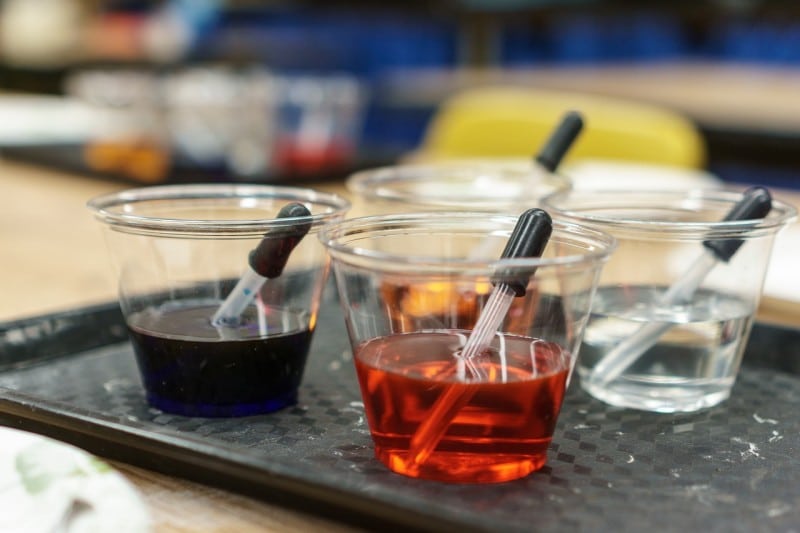Science experiments are a great way to get students excited about science, but as the weather gets colder 
Indoor Science Experiments
1. Make glow in the dark bubbles.
It doesn’t matter what age you are, things that glow in the dark are always cool. And, an experiment that let’s you play with stuff inside of a glow stick is even better. To make glow in the dark bubbles, you’ll need a highlighter or glow stick, dish liquid, tonic water, and a black light. Mix the inside of the glow stick or highlighter with the tonic water and dish soap. Then, using a bubble wand, you can start blowing bubbles. To see the different colors, you’ll need to turn the lights off and use a black light.
2. Regrow leftover food.
This experiment is perfect with the holiday season coming up. Students can use leftovers from their Thanksgiving meals and actually regrow the food! Throughout the course of the experiment, you can talk about photosynthesis and plant science. It’s actually a really simple experiment. You can get the details on all of the different foods you can grow here.
3. Crystallized faux feathers.
For a lesson in evaporation, you can crystalize faux feathers. The first thing you’ll need to do is make a water/salt mixture, put the mixture in Mason jars and let the faux feathers dip down into the water solution for about three days. At the end of the three days, you can pull the feathers out and let them dry. When the feathers are completely dry, your students will get a huge kick out of the square salt crystals that formed on the feathers. See complete directions here.
4. Create a rainbow in a glass.
If you’re looking to do density science experiments, you can create a rainbow in a glass. This experiment involves creating various sugar liquids and then combining them into one container. The sugar causes the water to become more dense. Creating multiple solutions with different densities will allow you to then combine the solutions. The densest solution will sit on the bottom while the lightest will be on top.
5. Make a homemade lava lamp.
To discuss liquids mixing and not mixing plus chemical reactions, build a lava lamp with your class. In this experiment, you’ll combine water, oil, and food coloring in a clear container. The water and oil won’t mix because they have different densities and polarities. The water and the food coloring, because it’s water based, will both sink to the bottom. By dropping in a crumbled alka-seltzer tablet, you’ll cause a colored water droplet to rise to the top of the container, pop, and sink back down to the bottom.
If you’re looking for other ways to get students excited about science, check out our e-book on High-Altitude Weather Balloon Curriculum and Project Based Learning. You’ll discover how weather balloon curriculum improves student learning and how to successfully motivate students with curriculum.



